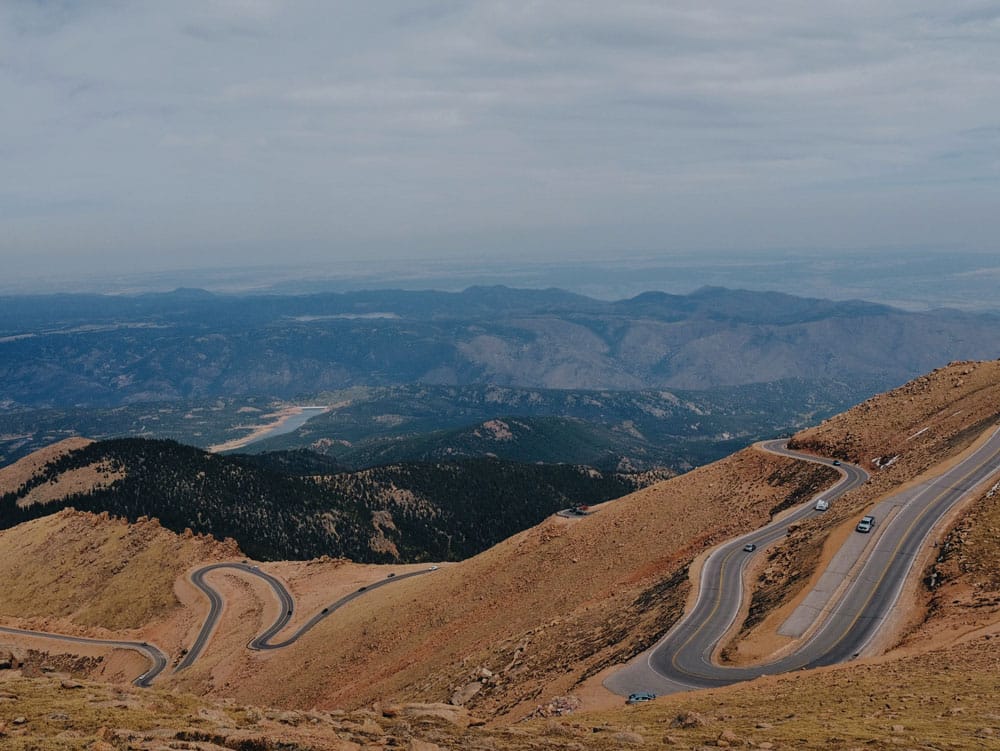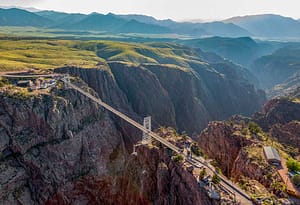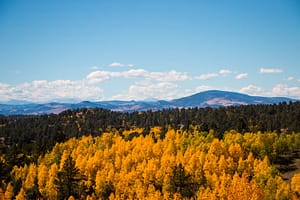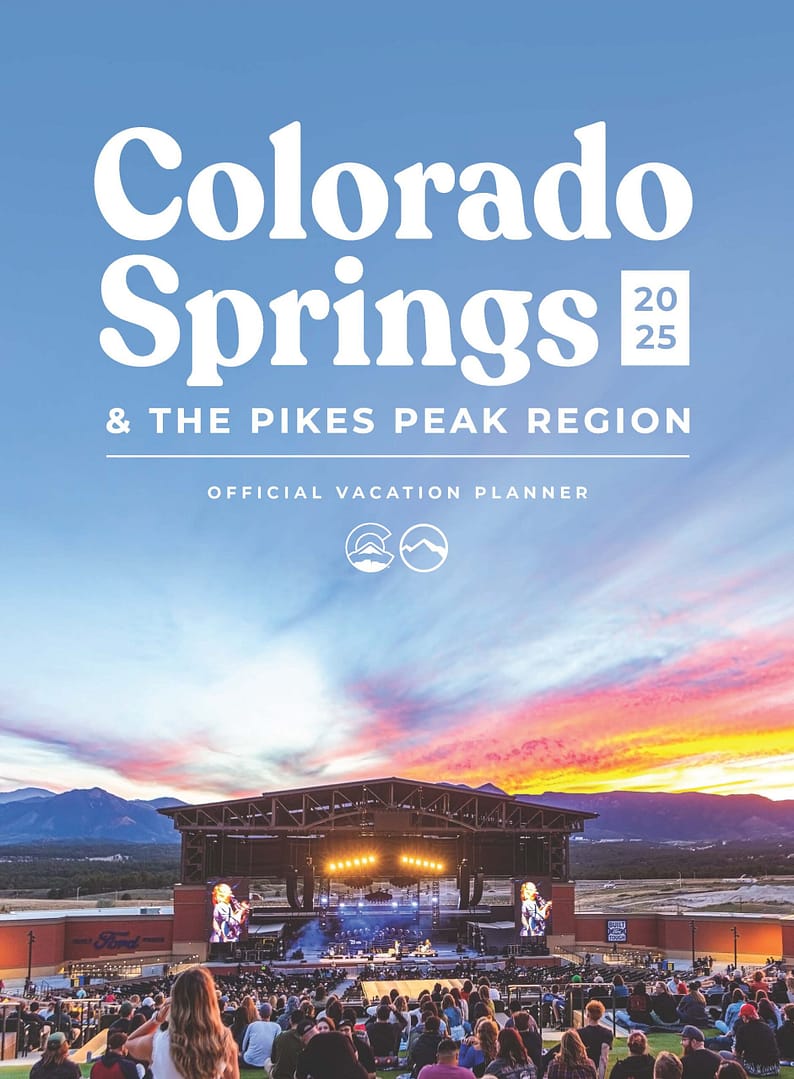The History of the Pikes Peak Highway — 75 Years of High Elevation Fun
The Pikes Peak Highway has been around for more than 100 years, but 2023 represents a special milestone. It’s the 75th anniversary of the day the famous highway moved under the care of Colorado Springs, cementing our city’s enduring relationship with America’s Mountain. What makes the Pikes Peak Highway so incredibly special that an entire city was willing to take on the maintenance and operation? Quite a bit, actually! Read on to learn all about the history of this famous alpine road and why you should definitely make time to drive it yourself.
Quick Facts About the Pikes Peak Highway
Before we get started with the history of the highway, let’s break down some quick facts:
- The Pikes Peak Highway is actually owned by the U.S. Forest Service. The City of Colorado Springs has a special permit to manage the highway and toll road.
- The highway is 19 miles long and ascends over 6,700 feet in elevation. There are about 156 turns in that 19-mile stretch, many without guard rails.
- The highway was not technically completed until 2011, when the paving of the road finally reached the summit. While there were concerns that paving the road would have a negative impact on the Pikes Peak Hill Climb, the race is still thriving.
- 500,000+ people drive up the highway each year.
- It takes about two hours to make a round-trip drive without stopping to explore or visiting the Summit House. It also takes about half a tank of gas.
- You will travel through four Colorado life zones on your way to the summit: foothills, montane, sub-alpine and alpine.
With this background of cool facts about the Pikes Peak Highway, it’s time to take a journey to the beginning, when the Pikes Peak Highway was a mere dirt path with a dream.
The Beginning: The Pikes Peak Carriage Road
Before Pikes Peak had a highway to help motorists ascend, it was most frequented using trails and donkeys or mules. (Check out our article on Barr Trail to learn all about one of the most famous of those donkey trails.) In 1888, the Cascade Town Company opened the Pikes Peak Carriage Road (also called the Pikes Peak Wagon Road) to escort visitors to the summit. It was an incredibly popular venture that was bested only because of a new opportunity — the construction of the Cog Railway that finished a few years later. It did have a good run while it lasted, closing down after nearly 15 years of operation in 1902. Despite its closure, the route paved the way (pun intended) for the modern highway we all know and love.
Spencer Penrose and the New Race to the Peak
You’ll hear a lot of names when it comes to the founding and establishment of Colorado Springs, but Spencer Penrose is certainly one of the most prominent. The wily rascal foil to William J. Palmer’s stern teetotaler, Penrose built the Broadmoor Hotel (to circumvent Palmer’s liquor ban), the Cheyenne Mountain Zoo and many other famous attractions — including the world-famous Pikes Peak Highway.
In partnership with Charles L. Tutt (another name you’ve likely seen around town), Penrose decided to develop the highway to promote tourism in the Pikes Peak region and encourage more visitors to explore the areas in and around Colorado Springs. The cost of constructing the highway was an estimate $500,000. In 2023 dollars, which would translate to a good $15 million — which is still more affordable than the average $2 million per mile it costs to build a highway today. The highway was completed in 1915 and the first Pikes Peak Hill Climb Race immediately followed.
The Pikes Peak Hill Climb: The Highways Early Heyday
The first Pikes Peak Hill Climb was an epic event that drew visitors and media from all over the world. In fact, only one other race in America is older than the Pikes Peak Hill Climb, the Indy 500. The Hill Climb was a pretty epic feat for 1916, especially when you consider that the Pikes Peak Highway consisted entirely of gravel and gas-powered cars were barely 20 years old. According to the Pikes Peak Hill Climb website, the purpose of the original race was actually just to draw more people to use the highway and visit the Pikes Peak region.
Rea Lentz, described as “a boy from Seattle” in The Moffat County Bell, took first place with a time of 20:55.6. He drove a Romano Demon Special, which offered no roof for protection in the event of a crash. Fortunately, Lentz chose to make a much happier history by sticking to the road all the way to his grand prize finish.
The Lost Highway: Nature Wins the Race … For a Little While
The Pikes Peak Highway had an excellent run for about two decades. Unfortunately, however, Mother Nature made it exceedingly difficult for the highway to turn a profit. Even the famous Hill Climb couldn’t make up for the sheer amount of maintenance it takes to keep an alpine highway safe. The worst culprit in the road’s destruction was snow. Even modern equipment has a challenging time managing snow removal. The tools available to maintenance crews in the early 1900s were not nearly as efficient. Heavy snow, water run-off and daily traffic were not easy on the gravel road and caused serious issues on a near-daily basis.
Eventually, the cost became so prohibitive that the highway was relinquished back into the care of the U.S. Forest Service. Since the highway didn’t exactly go anywhere important (breathtaking scenic views were not the priority for a world recovering from the Great Depression and a world war) it was left to fade away with minimal interference. As you can imagine, the decline of the highway became quite severe. It’s difficult enough to prevent erosion, avalanche and slides below the tree line. Under an onslaught of tough storms and natural erosion, the road was nearly abandoned altogether.
Fortunately, the famous gateway to the summit was not lost to time. After 12 years of neglect, it was placed into the care of the City of Colorado Springs in 1948 — 75 years ago this month. Because the highway is so notoriously difficult to clean and maintain, the city established the route as a toll road. Proceeds from the toll are used to maintain the highway. They support the clearing of snow, maintenance of guardrails, pavement repair, pothole repair, erosion control, environmental protections and much more.
Today’s Highway: The Gateway to America the Beautiful

Today, the Pikes Peak Highway is one of the most popular stretched of road in the United States. Hundreds of thousands of visitors make their way of the mountain each year via the 19-mile highway. In fact, the highway has become so incredibly popular that Colorado Springs has phased into a reservation system during the road’s most popular season. America’s Mountain has become a bucket list destination for thousands of travelers and the highway levels the playing field so that anyone can reach the summit if they can find a ride to get there.
Paved from the toll booth to the towering Summit House, the Pikes Peak Highway travels through multiple unique life zones, ranging from lush foothills to harsh alpine terrain. With frequent pull-offs and multiple points of interest, visitors can explore a variety of different flora and fauna all on the same route.
At the top of the mountain, the new Summit House provides drivers with hot and fresh, high-altitude donuts that are perfect for a re-fuel after navigating a few of the highway’s more hair raising (and guardrail-free) switchbacks. An exploratory walk that rings the Summit House parking lot includes lots of information about the mountain and the pioneers wild enough to turn an entire mountain into a destination for fun.
If you have never traveled the Pikes Peak Highway, now is certainly time to take yourself on an adventure. And if you have? We think it’s high time you went back. Bring a friend who has never been and enjoy the magic of seeing the mountain for the first time through their eyes. There’s a reason that this high-elevation route has managed to hold on strong for more than a century — and why Colorado Springs has invested more than seven decades in ensuring everyone gets their chance to make it to the top.







